Local News
Winnipeg Conservative/Reform congregations’ virtual Yom Tov services very well received
 By MYRON LOVE
By MYRON LOVE
Due to a combination of government-imposed limitations on numbers and many people’s reticence in attending religious services because of Covid, our community’s congregations were forced to rethink their usual High Holiday services.
For both Congregation Etz Chayim and the Shaarey Zedek, our community’s largest congregations, as well as Reform congregation Temple Shalom, the solution was to live stream services – a continuation and expansion of what they had been doing since the province went into lockdown in late March and, for the Shaarey Zedek, a service that the synagogue has been offering for several years now.
And the response, according to both Etz Chayim’s Executive Director Jonathan Buchwald and Ian Staniloff, Congregation Shaarey Zedek’s executive director, exceeded expectations. “Everything went incredibly well,” Staniloff says, “except for one hiccup when the shul cloud for all of North America went down for a short time.”
Staniloff reports that well over 600 “unique users” tuned in as well as over 400 people listening on audio only. “We assume that there were on average at least 1.5 viewers per household,” he notes. “In many households, people got together as a family to take part. Overall, we estimate that we had as many, if not more people, participating in our services.”
(Last year, the Shaarey Zedek reported an attendance of more than 1,700 for the High Holidays.)
Staniloff further reports that, while the numbers dropped somewhat for the second day of Rosh Hashonah, participation for Kol Nidre and Yom Kippur day were very strong.
Congregation Etz Chayim (where High Holiday attendance last year was about 850) offered a virtual service this year – with the exception of ten people to form an in-person minyan.
“We organized a task force, incorporating members with health and safety, technical and communications expertise, to put our High Holiday program together, ” Buchwald notes.
“While services are going to look, sound and feel very different than what we are used to, Rabbi Kliel, Cantor Tracy and our entire Ritual team will offer a most meaningful and memorable ‘Virtual Sanctuary’ for Rosh Hashanah and Yom Kippur”, Buchwald reassured synagogue members in an email sent out to congregation members in the summer. “Our own Virtual Voices choral ensemble under the direction of Sarah Sommer will bring a special depth and beauty to our services. ”
Etz Chayim asked members to buy virtual seats beforehand. People were really supportive, ” Buchwald says.
He reports that 370 households signed on to participate in the services. “That would be the equivalent of about 700 people. We also had people tuning in from other parts of Canada, Mexico City and Australia.”
The virtual service, he adds, also incorporated Etz Chayim’s long-standing “Family of Roses” alternative service, led by Rabbi Neal and Carol Ros,e as well as separate pages for childrens stories and crafts. ”
Temple Shalom’s virtual High Holidays programming also attracted former members from across Canada as well as viewers from New Mexico, France and Romania.
”We had a fabulous response, ” says Judith Huebner, the congregation’s co-president. “For Kol Nidre, we had 100 people on Zoom and 500 more viewed the service on Facebook later.”
Certain parts of the High Holiday service were available online only for Temple Shalom members.
Rounding out our community’s Conservative congregations is the Chevra Mishanyes congregation in Garden City. For Rosh Hashonah, reports the congregation’s long-time president, Marshall Kneller, the plan was to have two services each day with about 50 in attendance for each service. As it turned out, only one service was held each day.
“We had a little under 50 for Rosh Hashonah,” Kneller notes. “As for Yom Kippur, we were going to offer two services but, after Winnipeg was raised to Code Orange, a lot of people were concerned and reluctant to come for services. It was a tough choice but, in the end, we decided to cancel services for Yom Kippur. With all things considered, we wanted everyone to feel safe.
“We did have a service for Sukkot though.”
Our community’s Orthodox synagogues, precluded by halakhah from attempting virtual Yom Tov services, did the best they could under the circumstances. The Adas Yeshurun Herzlia Congregation, the largest of the Orthodox synagogues, held three separate services each day of Rosh Roshanah, with the third service combining mincha (the afternoon service) and maariv (the evening service).
“A lot of our people who had registered to attend chose not to attend our services,” says Jack Craven, the congregation’s president. “We had 40 to 50 people attending each of the two morning services and 25 to 30 in the evenings. For Kol Nidre, our numbers were down considerably. For Yom Kippur day, we davened outside.”
Craven adds that the congregation did have Sukkot services inside which were reasonably well attended and followed the mandated protocols.
For the Lubavitch Centre, it was business almost as usual for the High Holidays. “There were some logistics we had to arrange – and we did ask for reservations,” Notes Rabbi Boruch Heidingsfeld. “Our numbers were down because of social distancing requirements and some people were uncomfortable with coming.
“Our services were much the same as any other year, but we did a lot less singing. It’s harder to do through a mask.”
The two North End Orthodox shuls that had minyans for the High Holiday services – the Ashkenazi and Chavurat Tefila – were able to hold services – with reduced numbers – for Rosh Hashonah but, as with the Chevra Mishnayes, were not able to offer Yom Kippur services.
Local News
New Israeli restaurant opens in River Heights

By BERNIE BELLAN (July 6, 2025) It’s been a long time since our community has been able to welcome the opening of a restaurant that specializes in Israeli food.
That void is now going to be filled with the opening of The Green Falafel, at 1833 Grant (corner of Centennial – next to the Subway).
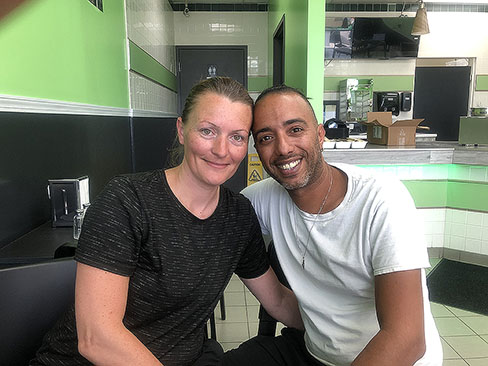
The restaurant is the fulfillment of a dream long held by the husband and wife team of Ariel and Eden Maudi, who have been living in Winnipeg the past 11 years.
Ariel, who was born in Israel and grew up in Beer Sheva, says that he worked in telecommunications in Ramat Gan for several years. He adds though that he had always dreamed of owning his own falafel stand in Israel, but life was difficult there and he decided to come to Canada as a tourist to see whether there were any opportunities here for him, Eden and their two young children.
Eden, who was born in Russia and moved to Israel with her family in 1996, stayed behind with the two kids, who were both pre-schoolers, while Ariel tested the waters in Canada first.
Ariel says he came to Canada as a tourist in 2013. His first stop was in Toronto, where he acquired his 1st class driver’s license. At the end of 2013 he moved to Winnipeg where he began working as a truck driver. Soon he found himself employed as a successful sales person at Vickar Nissan where, he says, he once achieved the status as the top car sales person in Canada. After working at Vickar Nissan for a number of years, Ariel began working as an installer for Bell MTS.
Meanwhile, Eden began working at a Walmart, later at the Costco on Regent.
But, when the opportunity to move into a space that had been previously occupied by another restaurant, but which had closed, became available, Ariel and Eden decided to open their own Israeli restaurant in an area that hadn’t seen Israeli food served since the controversial closure of Bermax Café in 2019.
The Maudis say that they will be serving a variety of Israeli dishes – all vegetarian, and that they will be fully kosher.
The “green” in Green Falafel, by the way, Ariel Maudi explains, comes from the cilantro and parsley that are added to the chickpeas. In addition, their pitas will be coming from Israel and will be baked fresh daily.
The Green Falafel will be open from 10-8 daily. Delivery will be available through Uber Eats and DoorDash.
Call 204-557-7837 for information.
Local News
Previews of shows with Jewish performers at this year’s Fringe Festival July 16-27

For show dates and venues go to winnipegfringe.com
By BERNIE BELLAN As has been our custom for many years now we try to find shows that have either Jewish performers or themes that would have particular appeal for Jewish audiences. Many of the Jewish performers at this year’s festival have been here before, but several are new. In no particular order here are blurbs about the shows we’ve found that fit the criteria I’ve just described. (By they way, if we’ve omitted a show that should be included in our list there’s plenty of time to get added to this post. Just drop me a line at jewishp@mymts.net.)

You’ve Been Served: A One-Woman Show About Divorce, Cults, and Coming of Age at Midlife
Noemi Zeigler
You are hereby summoned… to laugh, cry, and maybe belt out a Streisand number in solidarity. You’ve Been Served is a raw and riotous solo comedy by writer-performer Noemi Zeigler. It all begins when Noemi is served divorce papers on top of a garbage bin lid while taking out the trash—an undignified start to a full-blown midlife unraveling.
At 50, still clinging to her dream of becoming a singer, she falls under the spell of a music producer slash self-help guru, joins a spiritual cult, and, instead of landing a record deal, she lands in jail. Behind bars, with help from her long-buried inner child, she begins to reclaim her voice and her power. Turns out, dreams really do come true—just not the way she expected.
The show features vividly drawn characters—including a manipulative cult leader, a toxic ex-husband, and a jail guard named Roach who shares Noemi’s obsession with the fashion of Charlie’s Angels (the ‘70s TV version, of course.)
With salsa dancing, twerking, and a belting rendition of Don’t Rain on My Parade, Zeigler dives into abandonment, reinvention, and self-rescue. As she confronts perimenopause, she discovers it’s not the end—it’s the new puberty. The show touches on grief, sexuality, and spiritual confusion, but Noemi’s childlike optimism asks: What if your breakdown is actually your breakthrough?
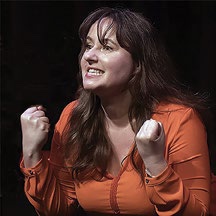
You’re good for nothing… I’ll milk the cow myself
Written & Performed by Natacha Ruck
France, 1981: The first socialist president is about to be elected and young Natacha is ready to implement her own political platform. But first, she has to take down the schoolyard bully,emasculate the rules of French grammar and make off with grandmother’s chocolate.
If you think you know the limits of Jewish mothers, evil grandmothers and transcontinental lovers, meet Natacha Ruck’s family. This true tale of three generations of women, facing three world wars, is equal parts hilarious, shocking and zany.

A One Human Being, Potentially Comedic Performance of Beauty and the Beast NEW WORK!
Written & Performed by Alli Perlov
Be our guest! Local high school drama teacher Alli Perlov is back for a tale as old as time. Can she sing? Not really. Can she act? That’s debatable. Will you laugh? Oh… probably.
Perlov plays dozens of characters, some human, some animal, and many objects, in a comedic exploration of Beauty and the Beast.
In an homage to this brilliant musical adventure, through witty commentary and unstoppable energy, Perlov aims to entertain an audience that isn’t forced to be there like her students.

Hockey Sticks and Beaver Pie
Written & Performed by Melanie Gall
Take a trip around Manitoba. From the 30,000 ft. St. Adolphe snow maze to the Narcisse snake dens! After all, where else holds both the title of Slurpee Capital of the World and the Guinness Record for the most people simultaneously howling like wolves?
Deanna Durbin, Terry Jacks and Burton Cummings are among the many homegrown stars, and Hockey Sticks features their music along with original songs and the stories that make this province unique.
Starring Melanie Gall from past shows Piaf & Brel, Ingenue and Toast to Prohibition
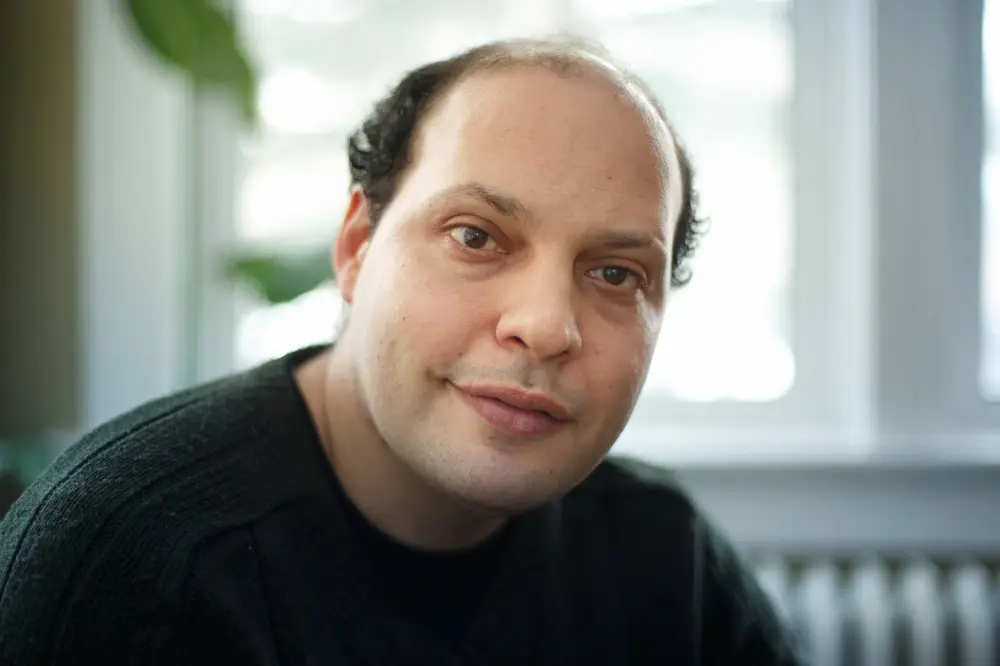
Nerohilarity Exposed
Produced by Adam Schwartz
We all sometimes feel exposed, whether that’s as a fraud or a pretender.
The performers of the award-winning Neurohilarity show, Danielle Kayahara (Laugh Out Loud CBC), Carole Cunningham (Yuk Yuks, The Debaters), Adam Schwartz (Winnipeg Fringe) and Rollin Penner (Yuk Yuks, CBC, Rumors, Winnipeg Comedy Festival), apply a comedic spin to the experiences that make us feel insecure, stripping away the emotional weight with nittygritty jokes and stories that will have you laughing uproariously.
Brilliantly awkward.

A Lesbian in the Kitchen
Willow Rosenberg
Professional lesbian Willow Rosenberg takes you on a journey through the centuries, superstitions and tablespoons of her lifelong passion for baking in this spiritual successor to 2024’s Jenny Award-nominated A Lesbian in a Bear Store.
Whether you have a favourite spatula, bake once or twice a year, or live in constant fear of being told to “just fold it in”, this one-woman show about family, joy, tradition (but make it gay),
Judaism, comfort, home (but make it gayer*), love, chemistry and magic is for you!
*Who’re we kidding, it’s all gay!

Eleanor’s Story: An American Girl in Hitler’s Germany
Written & Performed by Ingrid Garner
(Ed. note: Although Ingrid Garner isn’t Jewish, we thought the theme of this show might have a special appeal for Jewish readers.)
Based on Eleanor Ramrath Garner’s best-selling memoir, this 16x internationally award-winning adaptation – performed by her granddaughter, Ingrid Garner – details Eleanor’s youth as an American caught in Second World War Berlin.
Punctuated with humour and accompanied by cinematic sound and video, Garner embodies her ancestors in this coming-of-age odyssey, delivering an account of war that is more relevant than ever.
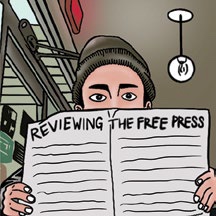
Reviewing The Free Press 2
Benji Rothman
The Winnipeg Free Press has run amok, reviewing each and every Fringe show over the past two decades without consequence or recourse. Now, it’s their turn… again.
In this refurbished work that debuted at last year’s Winnipeg Fringe, Benji Rothman once again takes the Winnipeg Free Press to task. In this (mostly) new, (hopefully) hilarious 45-minute show, Rothman dives deep into their past and exposes their faulty journalism, imbalanced reporting and, of course, embarrassing typos.
Local News
Jewish performers at this year’s Winnipeg Folk Festival July 10-13
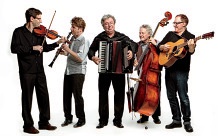
The Black Sea Station
Long ago, there were the klezmorim, itinerant musicians who roamed the back streets of Eastern Europe, playing at parties for meals and a few coins. The sound they honed then was a visceral exploration of life’s joy, and its loss; they could whip audiences into a frenzy of dancing, or bring them to tears with the mournful wail of a clarinet. Today, Winnipeg’s own The Black Sea Station is carrying on this tradition. Featuring Daniel Koulack (bass), Victor Schultz (violin) and Myron Schultz (clarinet) — cofounders of seminal local klezmer act Finjan — along with Moldovan accordion wizard Nikolai Prisacar and multi-instrumentalist Ben Mink, the quintet transports listeners to a time and place long past. Through a mix of original songs rooted in history, and traditional tunes spun up with modern zest, they whirl through the exuberant klezmer sounds of their Eastern European heritage, tending the old ways with deep love and respect.
The Black Sea Station will be performing Sunday, July 13, at 1:00 pm in Snowberry Field.
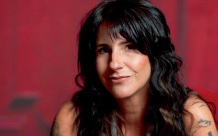
Romi Mayes
Romi Mayes has taken some hard knocks in her life, but she’s never faded away. For more than 25 years, Manitoba’s first lady of blues-rock has been a lynchpin of the Canadian roots scene. She earned that position the old-fashioned way, through her gritty, passionately emotive music. With her sizzling guitars and full-throated rasp, the Juno-nominated performer howls and purrs through razor-edged lyrics, rocking out wherever she can find a stage. She’s long been one of the hardest-working musicians on the circuit, keeping a busy slate of gigs and mentoring up-and-coming artists to get a foothold on the trails she blazed. Now, after a nine-year hiatus from the studio, Mayes has put her scintillating sound back on record with her long-awaited seventh album, Small Victories — a return that leaves no doubt, no matter the ups and downs, Mayes is here to stay.
Romi will be performing Friday, July 11, at 1:00 pm in Burr Oak.
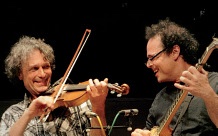
Leonard Podolak (with Matt Gordon)
Ireland’s Matt Gordon is a fiddler and singer, whose fleet-footed clogging and thigh-slapping hambone has taken stages by storm since the 1980s. Leonard Podolak is a virtuosic master of the clawhammer banjo, who for decades has whipped up some of Manitoba’s wildest roots parties with his band, The Duhks. Put those talents together, and they can promise you this much: we’re all gonna have a real good time. Longtime friends and musical collaborators, Gordon and Podolak deliver an exhilarating trip through old-time Appalachian music. Their performances seamlessly blend intricate instrumental lines with heartfelt singing and dazzling dance. They’ve teamed up on a few records over the years, including 2020’s bigband extravaganza Power Wagon: Live At Shanley’s. But the best way to experience this duo’s toe-tapping, hand-clapping chemistry is to see it live.
Podolak and Gordon will be performing A concert with a side of clogging Sunday, July 13, at 3:00 pm in Folk School.
